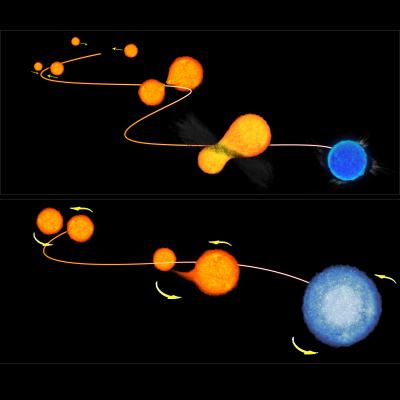Engineers from Oregon State University are attempting to develop a robot capable of running effortlessly over rough terrain and they're doing it with assistance from the unlikeliest of creatures--cockroaches. While they maybe unsightly, the insects are also biological and engineering marvels, and are providing the researchers with what they call "bioinspiration" in their efforts to build a running robot.
Their latest findings – just published in the professional journal Bioinspiration and Biomimetics – outline how animals use their legs to manage energy storage and expenditure, and why this is so important for running stability.
From the smallest South American monkeys to the largest African apes, the timing of molar development and eruption is closely attuned to many fundamental aspects of a primate's biology, according to Gary Schwartz, a researcher at the Institute of Human Origins and an associate professor in the School of Human Evolution and Social Change in ASU's College of Liberal Arts and Sciences.
The climate is changing and the natural world has to adapt to it. But how much time do the multitudes of species and their habitats have before it's too late? A team of environmental researchers has set out to answer that very question, and they say that as the world warms through the 21st century, ecosystems will need to shift about 0.42 kilometers per year (about a quarter mile per year) to keep pace with changing temperatures across the globe.
Female ducks can thank evolution for avoiding becoming impregnated by undesirable but aggressive males endowed with large corkscrew-shaped penises: vaginas with clockwise spirals that thwart oppositely spiraled males. That's right, males are literally screwed.
The research on this evolutionary 'battle of the sexes' at the genitalia level were described in the December 23 issue of the journal Proceedings of the Royal Society B.
Stars in globular clusters tend to be 12-13 billion years old but a small fraction appear to be significantly younger than the average population. Left behind by the stars that followed the normal path of stellar evolution and became red giants, those younger ones have been dubbed blue stragglers.
Oddly, blue stragglers appear to regress from 'old age' back to a hotter and brighter 'youth', gaining a new lease on life in the process - a cosmic facelift.
More than a hundred years after its discovery, the limbs and vertebrae of a fossil have been pulled off the shelf at the American Museum of Natural History to revise the view of early carnivore lifestyles. Carnivores—currently a diverse group of mostly meat-eating mammals like bears, cats, raccoons, seals, and hyenas—had been considered arboreal in their early evolutionary history.
But now that the skeleton of 'Miacis' uintensis has been unpacked from its matrix of sandstone, it is clear that some early carnivores were built to walk on the ground at least part of the time. The new research is published this month in the Journal of Vertebrate Paleontology
 Study: Caloric Restriction In Humans And Aging
Study: Caloric Restriction In Humans And Aging Science Podcast Or Perish?
Science Podcast Or Perish? Type 2 Diabetes Medication Tirzepatide May Help Obese Type 1 Diabetics Also
Type 2 Diabetes Medication Tirzepatide May Help Obese Type 1 Diabetics Also Life May Be Found In Sea Spray Of Moons Orbiting Saturn Or Jupiter Next Year
Life May Be Found In Sea Spray Of Moons Orbiting Saturn Or Jupiter Next Year









